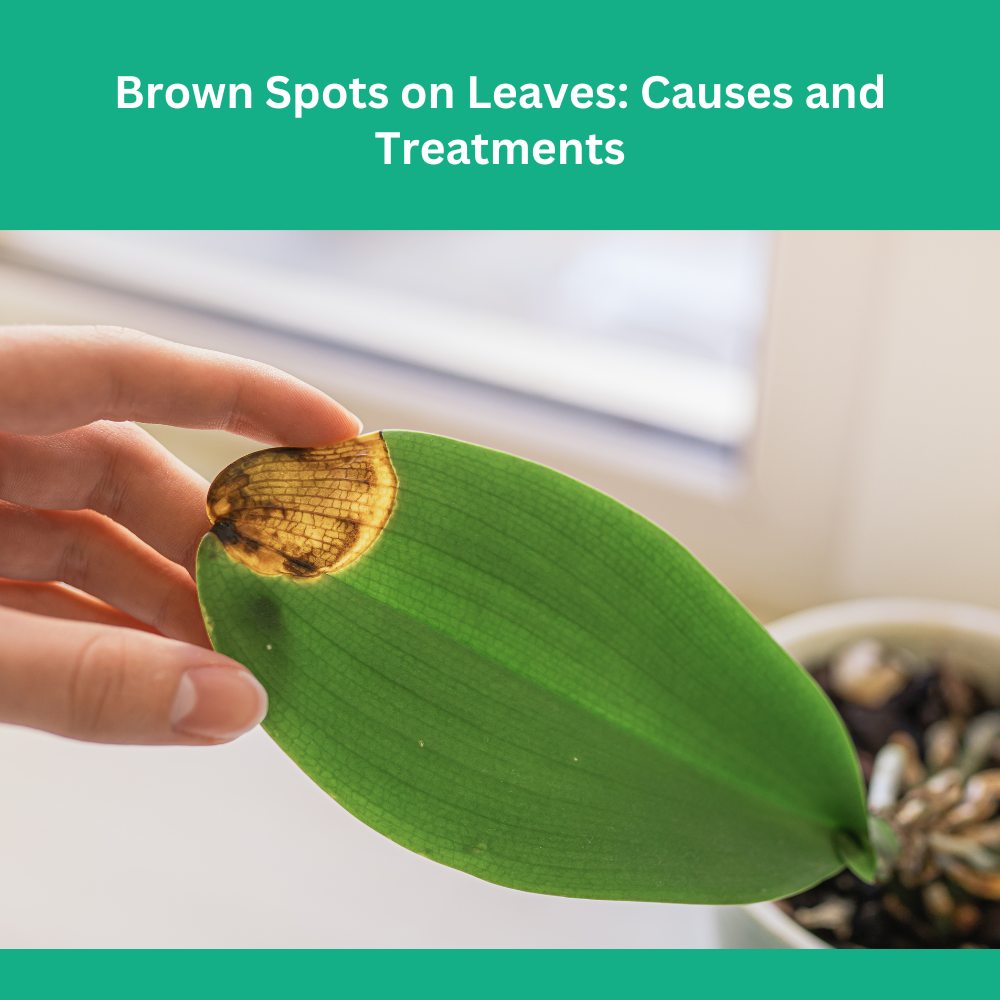Gardening is a rewarding hobby, but it can also come with its fair share of challenges. One common issue that gardeners face is the appearance of brown spots on plant leaves. These spots can be a sign of various problems, from pests to diseases to environmental stressors. Understanding the causes and knowing how to treat them can help keep your plants healthy and thriving.
Common Causes of Brown Spots on Leaves
- Fungal Diseases: Fungi, such as leaf spot and rust, can cause brown or black spots to appear on leaves. These diseases thrive in humid conditions and can spread rapidly if not treated.
- Bacterial Diseases: Bacterial leaf spot is another common cause of brown spots on leaves. It often appears as small, water-soaked spots that can turn brown or black.
- Pests: Insects like spider mites, aphids, and flea beetles can cause brown spots on leaves. They feed on plant sap, leading to stippling or larger brown areas.
- Sunburn: Direct exposure to intense sunlight can cause leaves to scorch, leading to brown or bleached spots.
- Watering Issues: Overwatering or underwatering can stress plants, leading to brown spots on leaves. Waterlogged soil can cause root rot, while dry soil can lead to dehydration.
- Nutrient Deficiencies: A lack of essential nutrients, such as magnesium or calcium, can cause brown spots or other discolorations on leaves.

Treatments and Solutions
- Proper Watering: Ensure that you’re watering your plants correctly. Use well-draining soil and avoid letting plants sit in water. Water early in the day to reduce humidity levels.
- Fungicides and Bactericides: For fungal and bacterial diseases, consider using organic or chemical fungicides and bactericides. Always follow label instructions.
- Pest Control: If pests are the culprits, use insecticidal soaps, neem oil, or other organic or chemical insecticides to treat the infestation.
- Shade and Sun Protection: If sunburn is the issue, consider moving your plants to a location with filtered sunlight or using shade cloth.
- Nutrient Supplements: For nutrient deficiencies, use a balanced fertilizer or specific nutrient supplements to address the deficiency.
- Regular Inspection: Regularly inspect your plants for signs of diseases, pests, or other issues. Early detection and treatment can prevent more significant problems.
- Pruning: Remove affected leaves to prevent the spread of diseases and improve air circulation.
Gardening requires patience, knowledge, and a bit of detective work. By understanding the causes of brown spots on leaves and knowing how to address them, you can ensure that your plants remain healthy and vibrant. For more gardening tips and solutions, visit thegardenersden.com.
Environmental Stressors and Their Impact
- Temperature Fluctuations: Sudden changes in temperature, especially cold snaps, can cause brown spots on leaves. Plants that are not acclimated to cold can experience frost damage, leading to browning.
- Air Pollution: In areas with high pollution, harmful chemicals in the air can settle on leaves, causing them to develop brown spots or a scorched appearance.
- Wind Damage: Strong winds can cause physical damage to leaves, leading to tears, bruising, and brown spots.
- Improper Application of Pesticides: Sometimes, the very products meant to protect plants can harm them. If pesticides or herbicides are applied incorrectly or in too high a concentration, they can cause brown spots or burns on leaves.
Soil and Root Issues
- Compacted Soil: Soil that is too compacted can restrict root growth and limit the uptake of water and nutrients, leading to brown spots on leaves.
- Root Diseases: Diseases like root rot can affect the plant’s ability to take up water and nutrients. This can manifest as brown spots on the leaves.
- Salt Accumulation: Over-fertilizing or using water with high salt content can lead to salt buildup in the soil. This can burn the roots and lead to brown spots on leaves.
Preventative Measures and Maintenance
- Regular Mulching: Mulching helps retain soil moisture, regulate temperature, and prevent soil compaction. It can also reduce the risk of fungal diseases.
- Proper Spacing: Ensure that plants have enough space to grow. Proper spacing improves air circulation, reducing the risk of fungal and bacterial diseases.
- Soil Testing: Regularly test your soil to check for nutrient levels and pH balance. This can help you address any deficiencies or imbalances before they affect your plants.
- Avoid Overhead Watering: Watering from above can leave leaves wet for extended periods, promoting fungal growth. Instead, water at the base of the plant.
- Clean Gardening Tools: Regularly clean and disinfect your gardening tools to prevent the spread of diseases.
- Choose Resistant Varieties: When selecting plants, opt for varieties that are resistant to common diseases and pests in your area.
Understanding the myriad of factors that can lead to brown spots on leaves is crucial for any gardener. By being proactive, regularly monitoring your plants, and taking swift action when issues arise, you can mitigate many of the common problems that lead to leaf browning. For a deeper dive into gardening challenges and their solutions, be sure to explore thegardenersden.com.
As an Amazon Associate we earn from qualifying purchases through some links in our articles.
